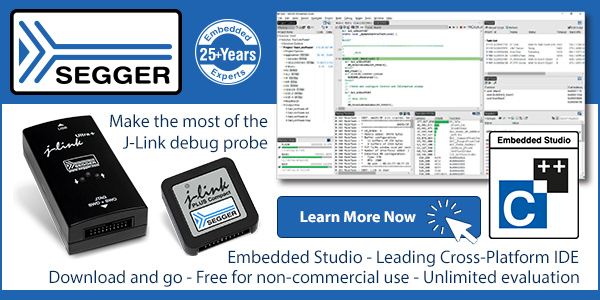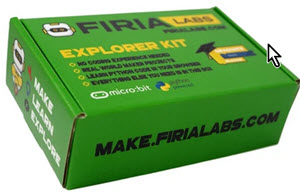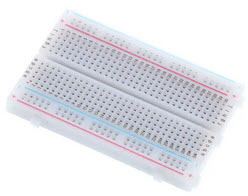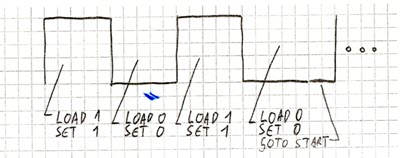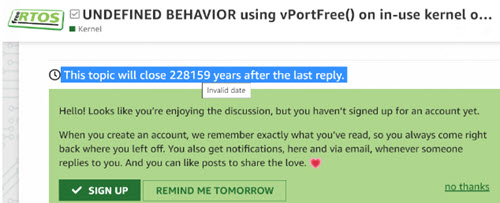|
||||
You may redistribute this newsletter for non-commercial purposes. For commercial use contact jack@ganssle.com. To subscribe or unsubscribe go here or drop Jack an email. |
||||
| Contents | ||||
| Editor's Notes | ||||
|
Jack's latest blog: Does Anyone Remember In-Circuit Emulators? |
||||
| Quotes and Thoughts | ||||
When in doubt, estimate. In an emergency, guess. But be sure to go back and clean up the mess when the real numbers come along. David L. Akin. |
||||
| Tools and Tips | ||||
Please submit clever ideas or thoughts about tools, techniques and resources you love or hate. Here are the tool reviews submitted in the past. Though I'm hesitant to enter the editor wars, I've been using Ultraedit for many, many years and it is my preferred editor on Windows. They're up to version 27; I'm using 24 as I just can't think of any additional features I'd need or want. The Ultraedit folks do sell a file compare, but I'm addicted to Beyond Compare from the oddly-named Scooter Software. It's fast and it shows deltas brilliantly. Bob Paddock wrote:
|
||||
| Freebies and Discounts | ||||
July's giveaway, courtesy of Firia Labs, is one of their Explorer Kits, which includes 2 micro:bit circuit board computers and associated components for experimenting.
Enter via this link. |
||||
| Microcontroller Basics with PIC | ||||
What, another book about the Microchip PIC? Aren't there shelves groaning under the weight of these tomes? Well, yes, but Tam Hanna's new book Microcontroller Basics with PIC is a bit different. It's aimed at students and embedded wanna-bees rather than practitioners. This is a hands-on book that teaches both hardware and software design in a manner analogous to how practicing engineers work. Many simple projects are introduced and explained. The wise reader will build and test the projects. However, unlike every other hands-on book, there is no specified evaluation or demo board used. He recommends using a PIC16F18877 with a solderless breadboard like this:
Then, each of the projects is built simply by plugging in a few parts on the board. This is an excellent approach as demo boards come and go; if gone, so would the value of the book be. (Alas, Tam doesn't use the word "solderless breadboard" and I'm afraid a novice wouldn't know how to go about obtaining this item). The book starts with the basics and begins with assembly language (another nit: it doesn't explain what assembly is or why it's important). MPLAB is the IDE used, and Tam gives a great overview of installing and using that product. Hardware and software are presented as a unified gestalt, as is proper in the embedded world. Code to toggle a pin is accompanied with oscilloscope screen shots showing the result. Even better, drawings annotated with events show what's happening when, such as:
Assembly instructions are presented with example usage and resulting scope outputs. I'd recommend that a reader have a scope handy to follow along; even a low-bandwidth USB scope would suffice. Sometimes blinking an LED is that "ah-ha" moment that turns people on to embedded systems. I think the real exciting bit from the book is a table-driven sine wave generator and the accompanying scope shot. The second half of the book is about using C. As the author notes, it's not a C text and assumes the reader has some familiarity with the language. But it does dig into using interrupts and various serial protocols. The book is chatty, perhaps too much so with many references to the author. But it is a great introduction to embedded systems and I recommend it. I'd pair this book with Alex Dean's Embedded Systems Fundamentals with ARM Cortex-M based Microcontrollers as two works, taken together, which would give a decent foundation to this field. Tam's will get you going in the 8-bit world; Alex pushes that to 32 bits and more complex subjects. Both are eminently practical and readable. |
||||
| Requirements Traceability | ||||
Responding to last issue's article about Software Elements Out Of Context, Harold Kraus wrote:
|
||||
| Failure of the Week | ||||
From Scott Sweeting:
|
||||
| This Week's Cool Product | ||||
Not quite a product, but researchers have a way of creating short pulses. How short? On the order of 5 ps. There's more here. Note: This section is about something I personally find cool, interesting or important and want to pass along to readers. It is not influenced by vendors. |
||||
| Jobs! | ||||
Let me know if you’re hiring embedded engineers. No recruiters please, and I reserve the right to edit ads to fit the format and intent of this newsletter. Please keep it to 100 words. There is no charge for a job ad. |
||||
| Joke For The Week | ||||
These jokes are archived here. From Clive Souter: I'll never forget the first time I saw a universal remote. I thought, "This changes everything!" |
||||
| About The Embedded Muse | ||||
The Embedded Muse is Jack Ganssle's newsletter. Send complaints, comments, and contributions to me at jack@ganssle.com. The Embedded Muse is supported by The Ganssle Group, whose mission is to help embedded folks get better products to market faster. |




